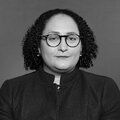originally posted at Salon.
President Obama’s pick to replace retiring Supreme Court Justice David Souter is Latina Judge Sonia Sotomayor. Should she be confirmed, such an appointment would bring both racial and gender diversity to the highest court in the land.
But the Supreme Court isn’t the only high court in need of diversification. State courts from Arizona to Wyoming could use improvement. Why are these courts more homogeneous than their states? Perhaps it’s implicit bias at work.
I’ll be the first to admit that I have my own implicit biases. Even though I am a minority woman, if you ask me what pops into my mind when you say the word “judge,” I don’t think of Justice Thurgood Marshall or Judith Kaye, ex-chief judge of New York; it’s a generic image of an older white gentleman in black robes. I suspect I’m not terribly unique. Indeed, this may have much to do with why white men are appointed to the bench (especially to higher courts) at rates that far outstrip their percentage of the general population.
Recently the Brennan Center for Justice at NYU School of Law, the nonpartisan public policy institute for which I am counsel, asked judicial nominating commissioners (that’s the people who suggest potential judges to state governors) if they wanted more diverse judiciaries in their states. The universal response was: yes. But in the very same states, diversity on the bench lagged far behind the diversity of the state.
So what accounts for this disparity? I co-authored a recent Brennan Center report that found a number of factors play a role in depressing the diversity numbers, including the pay difference between what is offered to judges and what they can make as lawyers in the private sector, some pipeline issues, and states’ inconsistent efforts to do outreach to potential judicial candidates. But another less visible factor is likely at play: an implicit bias that benefits white men.
Research from cognitive scientists at Harvard and elsewhere over the past two decades has illuminated the way we discriminate in an almost automatic, unthinking way. This body of research is built on the observation that nearly all humans stereotype others unconsciously even when they profess tolerance. We usually pick up these biases in early childhood and they are never fully dislodged. Unlike a conscious decision to discriminate, implicit bias operates without conscious intent.
Researchers have found that implicit bias has negative effects in many types of employment scenarios from screening résumés, to granting interviews, to hiring and promotion. The losers again and again in the employment context—even when they are similarly or even more qualified—are women and minorities.
When it comes to judges, the judicial appointment process is likely another site where implicit bias can rear its ugly head. If members of the nominating commission think of a judge as being naturally white or male, they may unconsciously place more whites and males on the short list that goes to the governor. The governor may also share this bias when making the final judicial selection.
One concrete example of the way implicit bias works and how it might be addressed comes from the unlikely world of orchestras. Researchers found that when female and male virtuosos auditioned for first violin, the man often got the job. But if the musicians auditioned behind a curtain so that the gender of the applicant was unknown, in a “blind” audition, more women got the job. In other words, the image of a first violinist being male was so strong that it trumped the actual notes being played. This strongly suggests that female violinists were at a disadvantage just by being women even when they could play the violin better than their male competitors.
The first step to increasing diversity in the judiciary—to being fair in the selection of judges—is acknowledging that there is a problem. Commissioners’ self-awareness that they may harbor an implicit bias that favors white males gives them the impetus to keep an eye on how they are recruiting and vetting potential judicial candidates. After all, with more female and minority law students streaming into the legal world, it would be a shame not to tap into that talent pool for future leaders on the bench.
